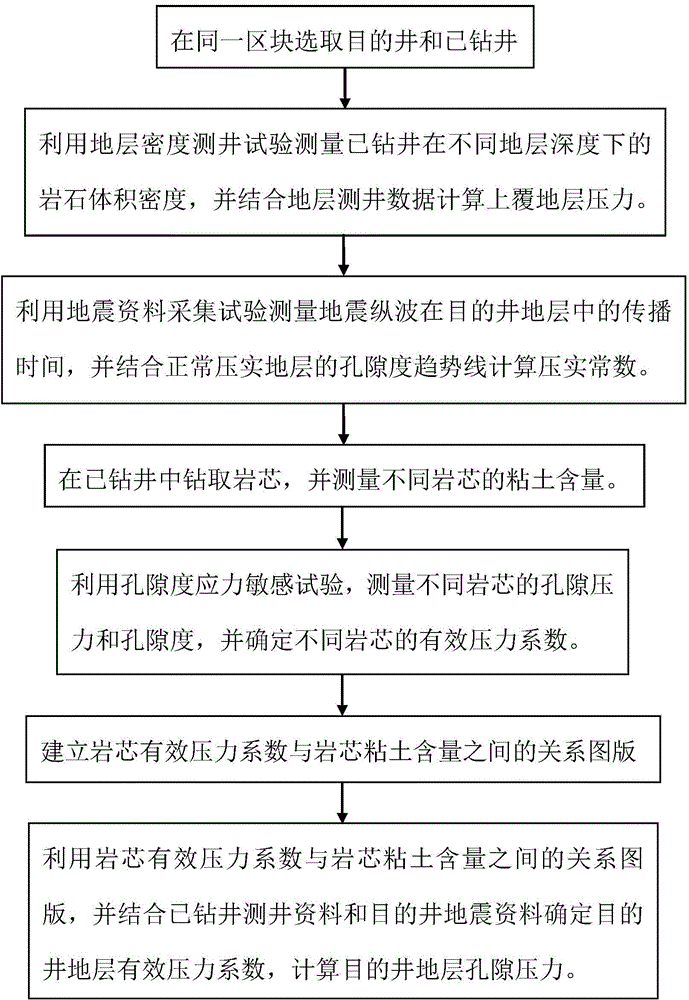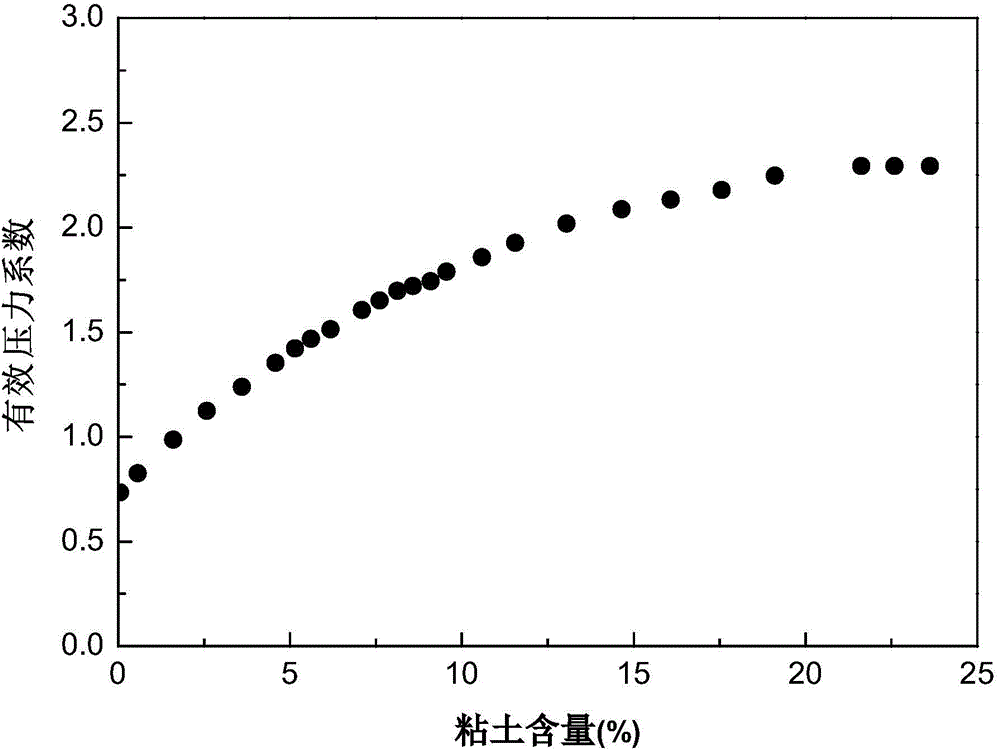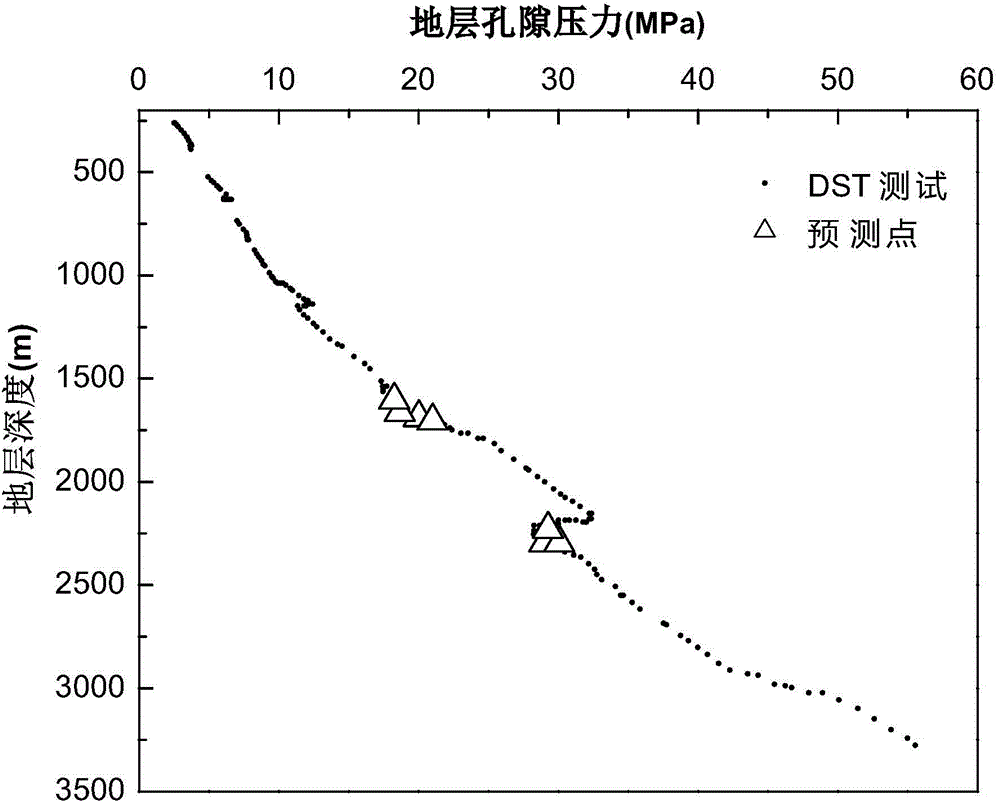Method for forecasting formation pore pressure by utilizing propagation time of seismic longitudinal waves
A technology of formation pore pressure and propagation time, which is used in the field of predicting formation pore pressure and using seismic longitudinal wave propagation time to predict formation pore pressure, which can solve problems such as inaccuracy and influence of formation pore pressure.
- Summary
- Abstract
- Description
- Claims
- Application Information
AI Technical Summary
Problems solved by technology
Method used
Image
Examples
Embodiment 1
[0129] Such as figure 1 As shown, according to an embodiment of the method for predicting formation pore pressure using seismic longitudinal wave propagation time of the present invention, it comprises the following steps in sequence:
[0130] Step 1: Select the target well and the drilled well in the same block;
[0131] Step 2: Using formation density logging test to measure the rock volume density of the drilled well at different formation depths, and combining the formation logging data to calculate the overlying formation pressure;
[0132] Step 3: Measure the propagation time of the seismic compressional wave in the formation of the target well by using the seismic data acquisition test, and calculate the compaction constant in combination with the porosity trend line of the normally compacted formation;
[0133] Step 4: Drill cores in the drilled well and measure the clay content of different cores;
[0134] Step 5: Using the porosity stress sensitivity test, measure ...
Embodiment 2
[0193] According to the embodiment of the method for predicting formation pore pressure using seismic longitudinal wave propagation time of the present invention, its steps, laboratory test method, formation logging method, theoretical derivation, beneficial effect and scope of application, etc. are all the same as embodiment one, the difference is : This embodiment selects sandstone formations of different oilfields to verify the feasibility and accuracy of the pore pressure prediction model. Drill 40 cores in the drilled well, and test the clay content and effective pressure coefficient respectively. The following key parameter values are obtained through laboratory tests, formation logging data and theoretical derivation: Δt m =230μs / m, Δt ml =672μs / m, α=0.8-2.5, c=0.00085m -1 . As the clay content increases, the effective pressure coefficient increases gradually, and different clay contents correspond to different effective pressure coefficients. By substituting each...
PUM
 Login to View More
Login to View More Abstract
Description
Claims
Application Information
 Login to View More
Login to View More - R&D
- Intellectual Property
- Life Sciences
- Materials
- Tech Scout
- Unparalleled Data Quality
- Higher Quality Content
- 60% Fewer Hallucinations
Browse by: Latest US Patents, China's latest patents, Technical Efficacy Thesaurus, Application Domain, Technology Topic, Popular Technical Reports.
© 2025 PatSnap. All rights reserved.Legal|Privacy policy|Modern Slavery Act Transparency Statement|Sitemap|About US| Contact US: help@patsnap.com



